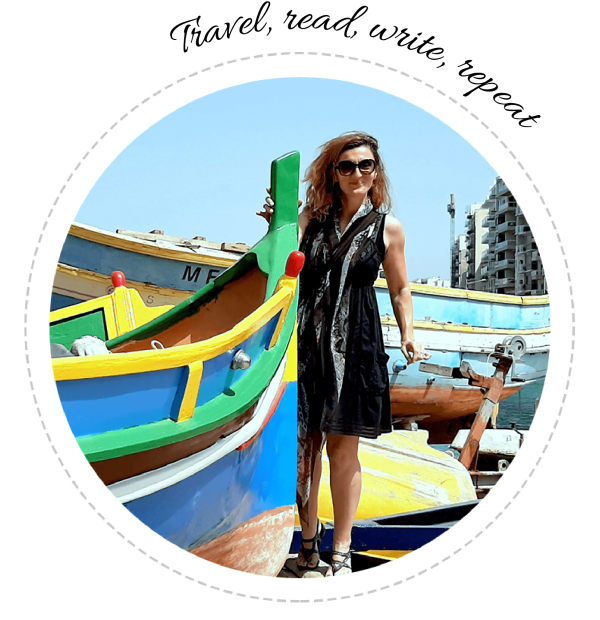
If you need a freelance travel writer or you would like to see your country, city, flight, etc., presented on the blog, drop me an email.
Find our more on Freelance Travel Writer page.
If you are following the Things to do in Cappadocia series, you know that we are just about to enter Sultanhani Caravanserai Turkey on our way to Cappadocia. We traveled another 110 kilometers from Konya, and there was still plenty of bus-jouncing ahead before reaching the famous chimneys of Cappadocia. It’s hard to keep track of the distance when all your attention is on tired feet and a bit of back pain.

Still, Turkey is a vast land, and the best way to explore it is by car or bus. So, let’s embrace the journey—the road signs were already showing that we were entering the Cappadocia region.
And then—just in time—another coffee break! We stopped in front of a massive building with intricate marble reliefs above its gates. Next to it, a café offering authentic Turkish coffee awaited us. (Be sure to specify if you don’t want sugar, as “real Turkish coffee” typically comes loaded with it.) Benches draped in traditional, colorful rugs provided a perfect spot to relax after all that jouncing.
But first, entering that imposing massive structure was an absolute must!
Here we were at this lonely outpost along the road from Konya to Aksaray, once a crucial resting place on the famous Silk Road.
The Seljuk Sultan Alaattin Keykubat I constructed this caravanserai between 1229 and 1236. It was named Sultanhani (or Sultanhan), with “han” referring to the caravanserai, a post where camels and merchants could rest. This is the renowned Sultanhani Caravanserai Turkey, a testament to the region’s rich historical significance.

After being damaged by fire 40 years after its construction, the Sultanhani caravanserai Turkey was restored, preserving its original appearance. Sultanhani is, in fact, the largest caravanserai in Turkey.
This remarkable tourist attraction eventually led people to settle nearby, creating a small village called Sultanhani. Today, this village is bustling with stores, restaurants, cafes, gas stations, and local crafts—everything you need for a convenient stop while traveling. Just as it was for those ancient caravans, right?
Sultanhan is a typical example Seljuk caravanserai , with ornately decorated gates and solid marble walls. Walking through the corridor toward the courtyard, you can feel the cool breeze, a welcome respite from the Turkish heat. The stone-paved courtyard is surrounded by various rooms that once served as dining halls, bathrooms, equipment repair shops, and even banks. In the center stands a small mosque, raised above the activity of men and animals, accessible via simple stairs.

To the right of the gate is a room where merchants stored their goods and slept during the summer months. At the far end of the courtyard lies a large hall with multiple entrances, lined with pillars and arches. In the center of the hall is a dome, punctuated by small windows that let in soft, natural light. The cool interior is a welcome contrast to the heat outside.
Caravanserais like Sultanhani have been in use since the 10th century. Trade across Turkey in the Seljuk period depended on these camel “trains,” or caravans, which would stop to rest in these fortified posts. These structures provided shelter not only for the traders but also for their animals.

Originally called ribats, these small military posts evolved into large, secure buildings offering accommodations. While the relief motifs often depicted dragons, lions, and floral designs, caravanserais in the Cappadocia region, such as Sultanhani Caravanserai Turkey, often featured geometric shapes. The massive iron doors resemble the gates of medieval castles.
During the reign of Seljuk Sultans Kilikarslan II and Alaattin Keykubat I, these buildings became grander, and road safety was guaranteed by the state. The government even compensated merchants for any loss of goods, making these caravanserais an early forerunner of modern insurance policies. This system not only boosted the Seljuks’ economy but also strengthened their political influence.
What a memorable coffee break!
Next: WHEN YOU GET TO “NOWHERE”
The full Cappadocia SERIES
PIN IT FOR LATER:
If you need a freelance travel writer or you would like to see your country, city, flight, etc., presented on the blog, drop me an email.
Find our more on Freelance Travel Writer page.
I am looking forward to working with you.




7 responses
Travelling the Silk Route is on my bucketlist, so I hope to visit these places during that trip.
The Silk Road? Oh, envious! 🙂 Would love to travel the whole root. Hope to read about your journey! Thanks. 🙂
That looks like a great trip, I love Turkey, really want to spend more time there.
It was, thanks! 🙂
Turkey has always been a bucket list country of mine! Lovely story and lovely photos!
Vast country and a lot of things to see, really. Thank you! 🙂